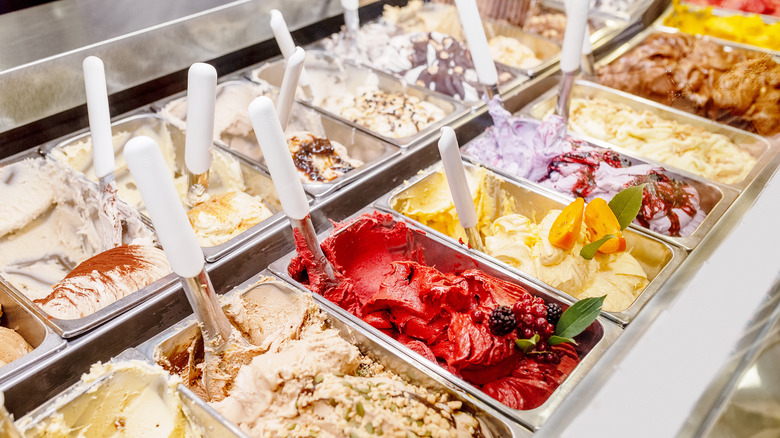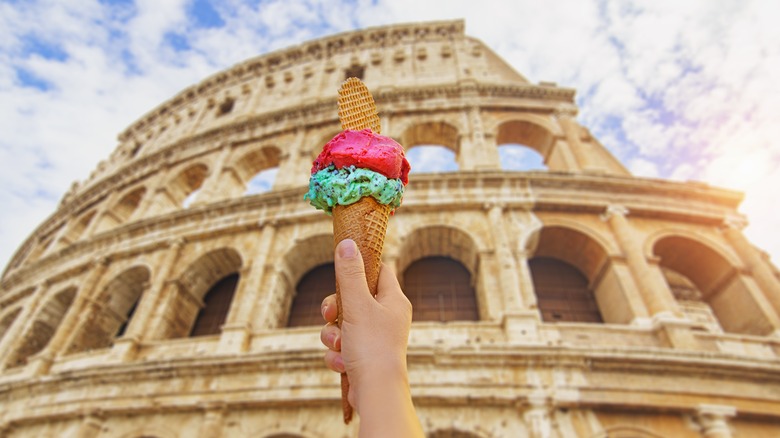The Gelato Rules You Should Always Follow When Traveling
Some of the most unique and loved frozen desserts come in various forms and sizes from all over the world. These include matcha ice cream from Japan, piragua from Puerto Rico, booza from Syria, and kulfi from India (via Taste Atlas). However, four frozen treats often get mixed up: ice cream, gelato, sorbet, and sherbet. The most significant difference can be found in their ingredients.
Per MasterClass, sorbet is made from fruit juice and sugar, while sherbet contains fruit juice, sugar, and milk. Ice cream is made with cream, milk, sugar, and egg yolks, all of which are mixed at high speeds to make it light and creamy. Most gelato consists of similar ingredients (minus the egg yolks). Importantly, however, this treat is mixed at slower speeds, making it richer and thicker than ice cream. Because gelato is "Italy's famous mouth-watering treat," (via The Catholic Travel Guide), it's essential to know what real gelato looks like so you don't purchase a mock product and sacrifice the authentic, delicious flavor of the sweet delight.
Make sure the gelato melts, is a natural color, and is stored properly
When traveling, there are several signs that you are eating fake gelato that you should keep an eye on. According to Slice of Tuscany, an Italian tour company, the two most important and obvious red flags are when "gelato" is stacked in huge mounds and does not melt. This indicates that unnecessary artificial ingredients and preservatives have been added, such as emulsifiers and vegetable fats. It's also important to check if the gelato shop offers flavors that are actually in season. If not, they most likely use artificial flavorings.
In addition to the flavor, if you see gelato that is abnormally colored, the gelato shop has most definitely used artificial colorings of some sort. Unless it's a special flavor, the base of gelato should be made with simple and natural ingredients. Additionally, most gelaterias are required to provide a public list of ingredients, so it should be easy to differentiate between the good and the bad. Or, in this case, the real and the fake.
The final test is to observe how the gelato is stored. Because of the way gelato is made, it must be kept at slightly warmer temperatures than ice cream. Per MasterClass, anywhere from 10 to 22 degrees F is ideal. Slice of Tuscany says that gelato held at least at counter level, if not lower, and in metal containers with a lid is the proper way to maintain and serve the frozen treat. Furthermore, gelato should not be served using a scooper but with a flat serving spoon made of metal.

